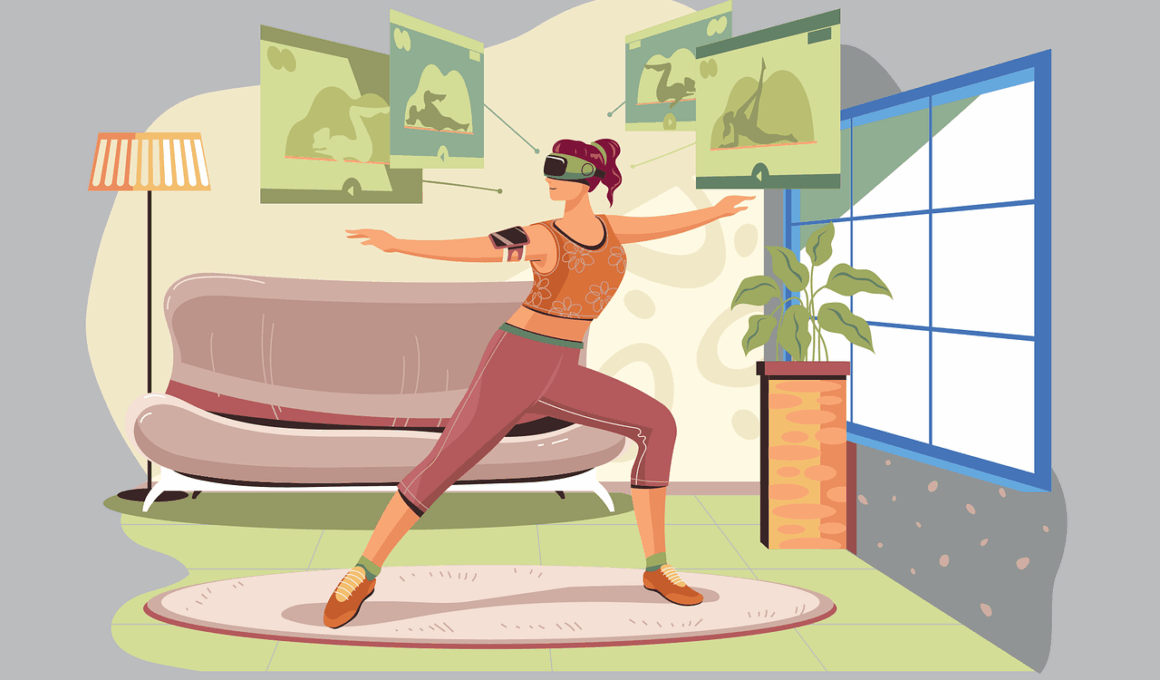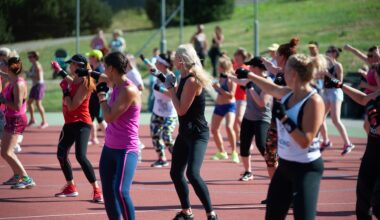Collaborations Between Developers and Therapists in VR Adaptive Fitness Creation
Virtual reality (VR) has emerged as a significant tool in enhancing fitness opportunities for individuals with disabilities. This innovative technology provides an immersive experience that can be tailored to meet unique needs. Both developers and therapists play crucial roles in this domain by creating effective solutions that maximize engagement and accessibility. Each VR program can be designed to support specific disabilities while catering to physical and emotional needs. Close collaboration ensures these programs are not only functional but can also become enjoyable workout experiences. For instance, developers design the content while therapists provide insights into the most appropriate exercises. They work together to address any potential limitations and make adjustments accordingly. Collaboration programs often include trial sessions, gathering feedback, and aligning fitness goals with those envisioned by therapists. The outcome can lead to more interactive and customizable VR fitness applications. Through iterative development and expert input, the VR adaptive fitness sector can evolve to become more inclusive, providing a range of beneficial outcomes for users. Such initiatives benefit not only the end-users but also contribute to broader acceptance of VR in therapeutic settings.
Understanding User Needs in Adaptive Fitness
Understanding user needs is paramount when developing VR fitness programs tailored for adaptive fitness. Developers and therapists must actively engage with potential users to identify specific challenges they encounter during physical activities. This comprehensive approach generates valuable data that informs design choices, ensuring programs resonate with users. For example, some individuals may struggle with coordination, requiring workouts that emphasize gradual skill development. Through collaboration, therapists can articulate these needs clearly to developers, who can then create targeted VR content. Providing a diverse set of training options that cater to differing abilities encourages users to immerse themselves fully in their fitness journeys. Feedback loops between collaborative partners allow for continuous enhancement of VR programs based on ongoing user interactions. Additionally, addressing emotional and psychological aspects of fitness can create a more holistic approach to therapy. This can include gamification elements that keep users motivated and accountable. Such synergy between developers and therapists leads to greater user satisfaction, making fitness accessible and enjoyable. Furthermore, individualized programs promote a sense of community, as users can encourage each other in virtual settings. Adaptive fitness through VR has the potential to transform lives significantly through these collaborative efforts.
Moreover, the implementation of adaptive VR fitness is greatly influenced by technological advancements. The evolution of motion-sensing technology, virtual environments, and real-time feedback systems has enabled developers to create immersive experiences that engage users effectively. This progression has been paramount in realizing the potential of VR fitness solutions tailored for disabilities. Developers must stay updated with the latest innovations in VR technology, ensuring that their applications are both functional and appealing to users. Key considerations include compatibility with various platforms, ease of use, and accessibility features. Therapists can aid developers by providing insights into how different technologies can amplify therapeutic benefits. They can also facilitate training sessions, where users learn to navigate VR settings, further enhancing their confidence and participation. Furthermore, developers are encouraged to explore new ways to integrate social interactions within VR environments. Facilitating virtual gatherings or fitness competitions can add a social element that many users find motivating. By tapping into emerging technologies, developers can successfully create programs that not only enhance physical fitness but also foster interpersonal connections among users with disabilities.
Best Practices for Creating VR Interfaces
Creating effective VR interfaces is a key consideration in VR adaptive fitness design. Both developers and therapists must collaborate to ensure that interfaces are intuitive and user-friendly for all individuals, regardless of their physical limitations. Developers should prioritize a user-centric design approach while considering accessibility features such as voice commands and simple navigation controls. This attracts a more extensive range of users, helping them effortlessly engage with the VR environment. Additionally, functionalities should be tested with individuals who have varying disabilities to assess strengths and weaknesses within the system. Responsive designs and visuals are crucial for enhancing the overall experience, enabling users to be comfortable and focused during workouts. Regular feedback from therapists is essential in refining these interfaces. They can highlight any difficulties users face, ensuring that developers understand real-world applications of their designs. Consequently, a thorough understanding of such user interactions informs necessary adjustments and upgrades. Lastly, iterative testing and updates will ensure interfaces continually meet evolving user needs, thereby promoting long-term engagement. These practices ultimately contribute to the successful implementation of VR in adaptive fitness, making it more enjoyable and accessible.
Another vital aspect is the ongoing training and support that therapists can provide to users engaging in VR adaptive fitness programs. As users adjust to exercising with VR technology, professional support is indispensable for maintaining motivation and engagement. Therapists can create individualized exercise plans that align with users’ preferences and comfort levels while incorporating VR elements into these routines. Moreover, therapists can initiate strategies to help users overcome obstacles they may encounter, whether physical or emotional. This includes teaching them how to manage anxiety or incorporate relaxation techniques before or after sessions. Feedback sessions between users, therapists, and developers create a continuous improvement cycle, enhancing the VR experience for all involved. Through open communication, necessary modifications can be made to keep users engaged. Additionally, on-demand resources and training materials can be developed to assist users in their journey. These supportive elements foster self-efficacy and empower users to take a proactive role in their fitness goals. Collaborating in this way ultimately leads to a more fulfilling exercise experience while supporting overall mental and physical health. The partnership among therapists, developers, and users helps maximize the therapeutic benefits of VR technology.
The Future of Adaptive Fitness in Virtual Reality
As we look toward the future, the potential of VR in adaptive fitness continues to grow tremendously. Both developers and therapists must remain adaptable and open to change, regularly integrating user feedback and technological advancements. This collaborative effort can lead to more sophisticated training programs capable of meeting diverse needs, accommodating various disabilities while fostering inclusive interactions. The continuous evolution of VR technologies can open up new possibilities for enhanced sensory experiences, making workouts not just physically enriching but also emotionally connected. For instance, incorporating AI into VR can personalize programs significantly, tailoring interactions based on user performance and response. Such innovations can further encourage individual growth while aligning with therapeutic approaches, ultimately leading to more effective outcomes for participants. Furthermore, the dissemination of knowledge sharing among developers, therapists, and the professional community can amplify breakthroughs in adaptive fitness. Online forums, workshops, and collaborative projects may facilitate this exchange, nurturing an ecosystem where ideas flourish. Embracing such a comprehensive partnership will undoubtedly enhance the quality of life for countless individuals, solidifying the role of VR adaptive fitness in therapeutic frameworks.
In conclusion, the synergistic collaboration between developers and therapists in the realm of VR adaptive fitness is essential for creating effective and engaging physical training programs. This partnership allows for a comprehensive understanding of user needs, essential feedback loops, and efficient implementation of new technologies. By focusing on a streamlined approach to training and support, the overall VR fitness experience can be versatile and user-friendly for individuals with disabilities. Moreover, future trends point toward more personalization and integration of advanced technologies, which will further enhance accessibility. Long-term commitment to these collaborative efforts will yield robust tools that not only promote physical health but also mental well-being. With continuous support from both developers and therapists, VR adaptive fitness can triumph over traditional barriers, leading to a revolution in physical therapy. Ultimately, embracing this multidimensional approach will offer profound benefits for individuals with disabilities, harnessing technology to foster a healthier lifestyle. The growing community of VR adaptive fitness enthusiasts reflects a promising foundation built on collaboration and innovation, paving the way for a future in which everyone can participate in physical activities inclusively.
This dynamic collaboration between technology and therapy helps to foster an inclusive environment for effective physical empowerment.


